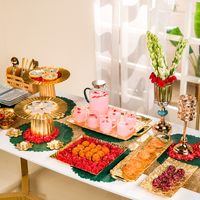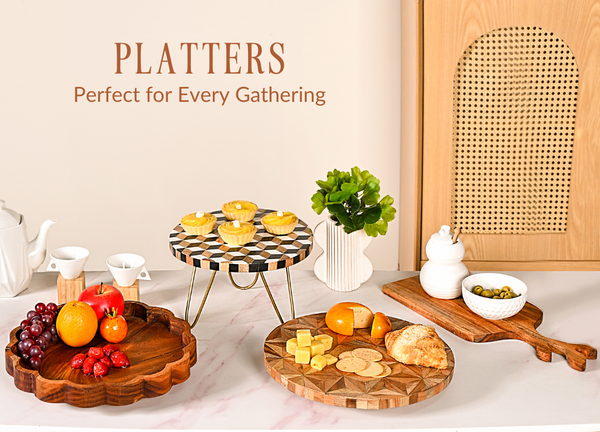Did you ever admire the glossy sheen of your ceramic crockery only to notice stubborn stains and dull spots stealing its charm?
From intimate family dinners to festive celebrations, ceramic dishes hold irreplaceable memories. But without proper care, those cherished memories can fade under layers of grime and discolouration.
The good news? Restoring your ceramic crockery to its pristine glory isn’t as daunting as it seems. With the right tips, a dash of patience, and a sprinkle of effort, your ceramic plates, bowls and mugs can gleam like new.
So are you ready to breathe life back into your ceramic crockery? Let’s uncover the ultimate secrets to cleaning ceramic crockery, the right way!
Understanding Your Ceramic Crockery For Proper Cleaning
Your ceramic crockery has seen it all, be it family dinners, late-night snacks or countless cups of tea. But behind every spotless plate and gleaming mug is a little know-how. Not all ceramics are created equal, and what keeps one piece shining might spell disaster for another.
Understanding the characteristics of ceramic crockery is key to keeping it clean and looking brand new. Each property affects how your crockery reacts to cleaning agents, heat, and moisture. Here’s what you need to know:
Porosity
Ceramic is naturally porous and therefore can absorb water and stains if not glazed. Glazed ceramics are sealed with a protective coating, resistant to stains, and easier to clean. Unglazed ceramics, like terracotta, require more careful cleaning to prevent water damage and discolouration.
Durability
Ceramic crockery varies in durability depending on the type. Stoneware and porcelain are generally more durable and chip-resistant, while earthenware tends to be more delicate. Handwashing is often recommended for delicate pieces to avoid chipping or cracking.
Heat Retention
The best quality of ceramic happens to be its heat retention property. This makes them perfect for serving hot dishes. However, sudden temperature changes, like moving from a hot oven to cold water, can cause thermal shock and lead to cracking. It is therefore important to allow them to cool gradually before cleaning.
Glaze Finish
The glaze finish of ceramics not only adds a glossy shine, but also serves as a protective barrier. Matte and textured glazes may require extra care as they can trap food particles and stains. Avoid using abrasive scrubbers to maintain the finish and prevent scratches.
Stain Absorption
Glazed ceramics are typically stain-resistant, but unglazed or lightly glazed pieces can absorb stains from foods and drinks like coffee, tea or sauces. A mixture of baking soda and water works well as a gentle stain remover. For tougher stains, consider soaking the item in a diluted vinegar solution.
Chemical Sensitivity
Some ceramics are sensitive to harsh cleaning agents. Acidic or abrasive cleaners can dull the glaze and also cause discolouration. Stick to mild dish soap and warm water for regular cleaning, and use a soft sponge to prevent damage.
Weight And Fragility
Ceramic crockery ranges from lightweight porcelain to heavier stoneware. The weight can make handling tricky, especially during cleaning. Always support the base while washing to prevent accidental drops. Fragile pieces may also benefit from padded drying racks or towels to reduce the risk of breakage.
Natural Cleaning Alternatives For Ceramic Crockery
If you prefer to keep your ceramic crockery spotless without relying on harsh chemicals, natural cleaning solutions are a great alternative. These eco-friendly options are gentle on your dishes while being effective against stains, grease, and odours.
Baking Soda For Stain Removal
-
Make a paste with baking soda and water, apply it to stains, and let it sit for a few minutes before scrubbing with a soft sponge.
-
For deep stains, sprinkle baking soda on the dish and add a little vinegar to create a gentle foaming reaction.
White Vinegar for Deep Cleaning
-
Mix equal parts vinegar and warm water, soak your crockery for 10-15 minutes, then rinse thoroughly.
-
For stubborn stains, rub with a vinegar-soaked cloth or sponge.
Lemon For Shine And Freshness
-
Rub a lemon half over stained areas or soak crockery in a solution of lemon juice and warm water.
-
Add a pinch of salt for extra scrubbing power on tougher stains.
Salt For Gentle Scrubbing
-
Sprinkle salt on a damp sponge and gently scrub away food residue and stains.
-
For unglazed ceramics, mix salt with baking soda for an even more effective cleanser.
Hydrogen Peroxide For Whitening
-
Apply hydrogen peroxide directly to stains and let it sit for a few minutes before rinsing.
-
For regular maintenance, add a small amount to a warm water soak once a month.
Storing Ceramic Crockery: Tips To Prevent Cracks And Discolouration In Storage
Proper storage is essential to keep your ceramic crockery in excellent condition. Incorrect stacking or exposure to moisture and heat can lead to cracks, chips, and discolouration over time. Follow these practical tips to ensure your ceramics stay beautiful and functional for years to come.
Choose a Dry and Cool Storage Area
Moisture is the enemy of ceramic crockery, especially for unglazed or porous pieces. Storing ceramics in a dry, well-ventilated space away from direct sunlight or heat sources is ideal. Humid areas like under the sink or near the dishwasher should be avoided, as they can promote moisture absorption and cause damage over time.
Stack with Care
Stacking ceramic plates and bowls without care can lead to chips and cracks. To prevent this, place a soft cloth, felt liner, or paper towel between each piece. This creates a cushioning layer that reduces friction. Avoid stacking dishes too high, as excess weight can cause stress and increase the risk of breakage.
Use Plate Racks or Dividers
For safer long-term storage, consider using plate racks or dividers. These keep crockery separated and upright, preventing contact and reducing the chances of chips. Mug trees or cup hooks are excellent for storing ceramic mugs, as they minimize surface friction and save cabinet space.
Avoid Direct Sunlight
Ceramic glazes are susceptible to fading when exposed to direct sunlight for extended periods. To preserve their vibrant colours and glossy finishes, store your crockery in shaded cabinets or enclosed cupboards. This is particularly important for decorative or hand-painted pieces.
Mind the Weight
Ceramic crockery can be heavy, especially stoneware and earthenware. To prevent accidents, store heavier items on lower shelves and delicate or lighter pieces higher up. Supporting the base of heavier ceramics when moving or stacking can also prevent damage.
Protect Against Dust and Moisture
Even in closed cabinets, crockery can accumulate dust and moisture over time. For pieces that are rarely used, covering them with a clean cloth or storing them in breathable storage bags offers extra protection. Silica gel packets can also be placed inside cabinets to absorb excess moisture and keep ceramics dry.
Rotate for Regular Use
To prevent discolouration and ensure even use, rotate your ceramic crockery periodically. Using all pieces instead of sticking to the same set helps maintain their finish and keeps them looking consistent. This is particularly useful for ceramics that are prone to staining or fading over time.
By following these storage tips, your ceramic crockery will stay free from cracks, chips, and unwanted stains, ready to grace your table at every occasion.
Wrapping Up
Your ceramic crockery is a canvas of memories, laughter and shared moments. Each plate has cradled your family’s favourite meals, every mug has held comforting sips of tea, and those serving bowls have witnessed countless celebrations. Keeping them spotless and gleaming isn’t just about mere maintenance, it’s about honouring these moments.
With the right care, your ceramics remain an integral part of your table, adding warmth and elegance to every gathering. Remembering a few cleaning hacks and knowing how to store them carefully will help your most cherished pieces stand the test of time.
So next time you cradle that favourite mug or serve a feast on your elegant dinnerware, know that with a little love and care, your ceramic crockery will always be there – shining, serving, and making memories. Because the best moments are often shared over a beautiful plate, don’t you agree?


























